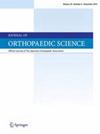Return-to-play outcomes after full-endoscopic spine surgery under local anesthesia in professional baseball players: Comparison by timing of surgery
IF 1.5
4区 医学
Q3 ORTHOPEDICS
引用次数: 0
Abstract
Background
Full-endoscopic spine surgery via a transforaminal approach (TF-FESS) is minimally invasive and could help athletes quickly return to play. When treating professional athletes, we have to consider their season schedule. In this study, we investigated the characteristics of Japanese professional baseball players who underwent TF-FESS and examine how the timing of surgery influenced their postoperative course.
Methods
Ten players who underwent TF-FESS (discectomy, foraminoplasty, or thermal annuloplasty according to their diagnosis) under local anesthesia were analyzed. Multilevel surgeries were performed at the same time in patients with lesions at multiple levels. The patients were divided into three groups according to timing of surgery (pre/during/post-season). Time to complete return to play and duration of official game loss were compared between the three groups.
Results
All players (100 %) could return to their original level of professional play after FESS surgery. Seven of the 10 patients underwent two-level surgery. The mean time until complete return to play was 4.6 months (range, 2–8 months) and the mean duration of game loss was 1.5 months (range, 0–4 months). The mean duration of game loss was shorter in the post-season group than in the other groups (0.9 vs 2,4 months), and 4 of 6 patients in the post-season group did not miss any games.
Conclusions
TF-FESS is a good technique for achieving a quick return to play in professional baseball players. In particular, surgery performed during the post-season could allow players to return to play after adequate rehabilitation with no game loss.
职业棒球运动员在局部麻醉下接受全内窥镜脊柱手术后重返赛场的效果:手术时机的比较。
背景:经椎间孔入路(TF-FESS)全内窥镜脊柱手术是一种微创手术,可帮助运动员迅速重返赛场。在治疗职业运动员时,我们必须考虑到他们的赛季安排。在这项研究中,我们调查了接受 TF-FESS 手术的日本职业棒球运动员的特征,并研究了手术时间对其术后过程的影响:分析了 10 名在局部麻醉下接受 TF-FESS(根据诊断结果进行椎间盘切除术、椎板成形术或热环成形术)的球员。对多层次病变的患者同时进行了多层次手术。根据手术时间(赛季前/赛季中/赛季后)将患者分为三组。比较了三组患者完全恢复比赛的时间和正式比赛失利的时间:结果:所有球员(100%)在接受 FESS 手术后都能恢复到原来的职业比赛水平。10 名患者中有 7 人接受了两级手术。完全恢复比赛的平均时间为 4.6 个月(2-8 个月),失去比赛机会的平均时间为 1.5 个月(0-4 个月)。季后组的平均缺席时间比其他组短(0.9 个月对 2.4 个月),季后组的 6 名患者中有 4 人没有缺席任何比赛:结论:TF-FESS 是一种让职业棒球运动员快速重返赛场的好技术。结论:TF-FESS 是一种让职业棒球运动员快速重返赛场的好技术,尤其是在季后赛期间进行手术,可以让球员在充分康复后重返赛场,而且不会缺席任何比赛。
本文章由计算机程序翻译,如有差异,请以英文原文为准。
求助全文
约1分钟内获得全文
求助全文
来源期刊

Journal of Orthopaedic Science
医学-整形外科
CiteScore
3.00
自引率
0.00%
发文量
290
审稿时长
90 days
期刊介绍:
The Journal of Orthopaedic Science is the official peer-reviewed journal of the Japanese Orthopaedic Association. The journal publishes the latest researches and topical debates in all fields of clinical and experimental orthopaedics, including musculoskeletal medicine, sports medicine, locomotive syndrome, trauma, paediatrics, oncology and biomaterials, as well as basic researches.
 求助内容:
求助内容: 应助结果提醒方式:
应助结果提醒方式:


